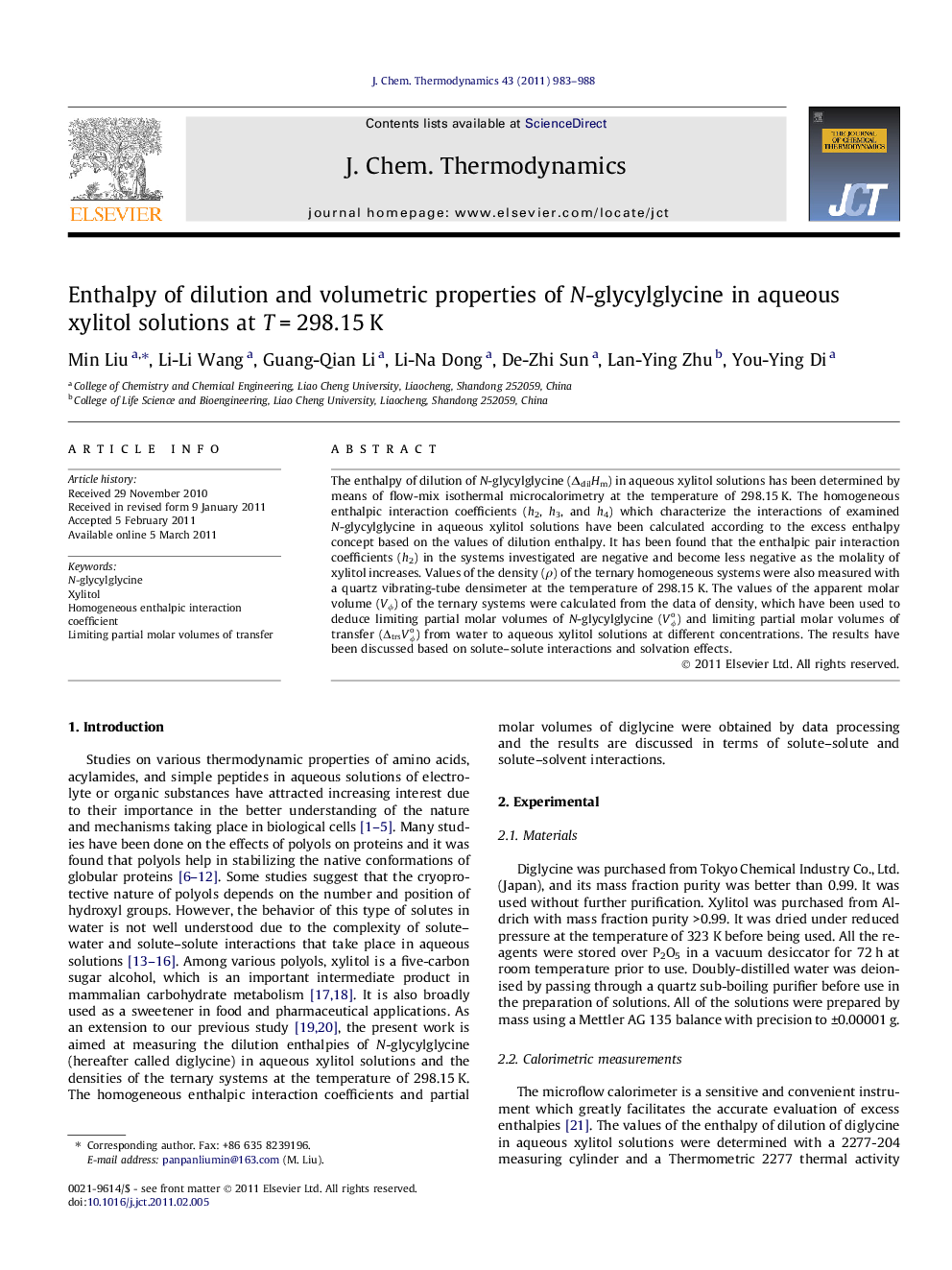| کد مقاله | کد نشریه | سال انتشار | مقاله انگلیسی | نسخه تمام متن |
|---|---|---|---|---|
| 216645 | 1426276 | 2011 | 6 صفحه PDF | دانلود رایگان |

The enthalpy of dilution of N-glycylglycine (ΔdilHm) in aqueous xylitol solutions has been determined by means of flow-mix isothermal microcalorimetry at the temperature of 298.15 K. The homogeneous enthalpic interaction coefficients (h2, h3, and h4) which characterize the interactions of examined N-glycylglycine in aqueous xylitol solutions have been calculated according to the excess enthalpy concept based on the values of dilution enthalpy. It has been found that the enthalpic pair interaction coefficients (h2) in the systems investigated are negative and become less negative as the molality of xylitol increases. Values of the density (ρ) of the ternary homogeneous systems were also measured with a quartz vibrating-tube densimeter at the temperature of 298.15 K. The values of the apparent molar volume (Vϕ) of the ternary systems were calculated from the data of density, which have been used to deduce limiting partial molar volumes of N -glycylglycine (Vϕo) and limiting partial molar volumes of transfer (ΔtrsVϕo) from water to aqueous xylitol solutions at different concentrations. The results have been discussed based on solute–solute interactions and solvation effects.
► Enthalpies of dilution of N-glycylglycine in aqueous xylitol solutions were determined at 298.15 K.
► The homogeneous enthalpic interaction coefficients were calculated.
► Apparent molar volumes of the ternary systems were calculated from the data of densities.
► Limiting partial molar volumes and limiting partial molar volumes of transfer were deduced.
Journal: The Journal of Chemical Thermodynamics - Volume 43, Issue 6, June 2011, Pages 983–988